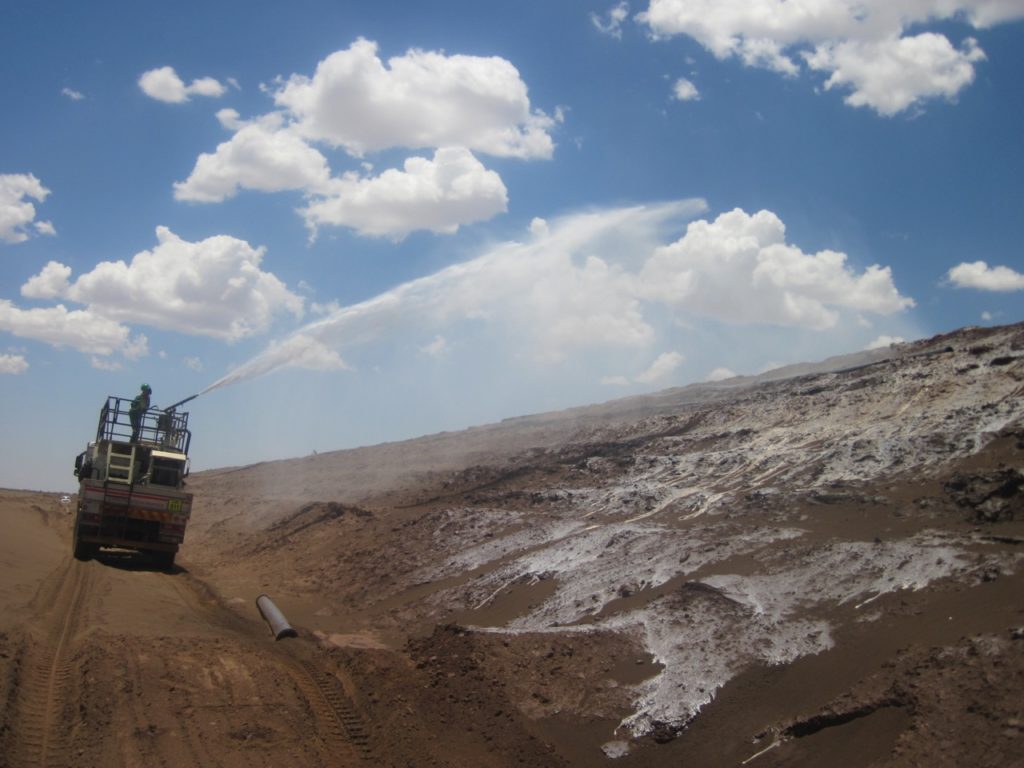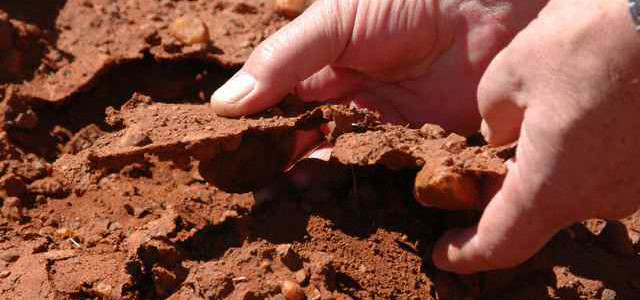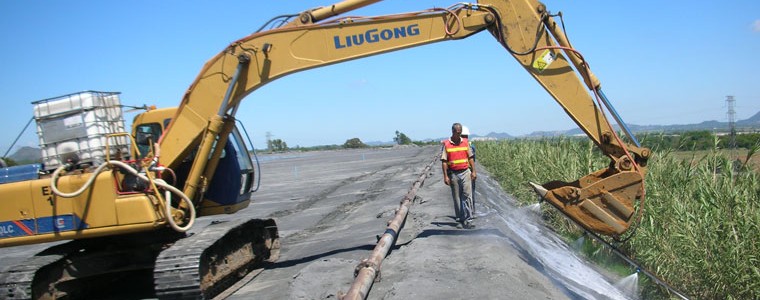Article Source. Harrisbery, Kim “Baptism by toxic water: Mine waste, sewage threaten SA’s worshippers, 14, July . 2019, https://citizen.co.za/news/south-africa/environment/2154576/abandoned-mines-a-witches-brew-of-heavy-metals-and-poisons/
A group of congregants dressed in long robes wade into the water of Soweto township’s Fleurhof dam, some immersing their entire bodies, while their pastors loudly sing prayers and blessings.
The dam is one of many water sources across South Africa of spiritual significance for communities, although researchers and scientists warn that contamination from nearby open mine sewage and waste puts worshippers at risk of water poisoning.
“We use water for healing purposes,” said Pastor Isaac Bhekumuzi Nxusa, head of the Igoba Healing Apostolic Church in Soweto’s Meadowlands neighbourhood, wearing a long green robe.
“So many churches come here for baptisms. If there is contamination (from a mine) our health could be in danger,” he said, gazing at a yellow mountain of sand in the distance – an abandoned mine dump.
This is one of about 6 000 abandoned and derelict mines – mostly gold, uranium and coal – across the country, according to the South African Council for Geoscience.
Soweto residents spoke of dust particles from mine dumps – also called tailings – blowing into their homes and over water sources during the rainy and windy seasons, as well as open sewage pipes flowing into dams.
The dust contains a mixture of chemicals like arsenic and cyanide, which could expose worshippers bathing in toxic water to all manner of health issues, from brain damage to skin cancers, environmental and health researchers said.
Under global development goals agreed in 2015, governments pledged to provide access to water and sanitation for all by 2030. But three in 10 people worldwide do not have a water source free from faecal and chemical contamination.
“Any form of pollution is an issue for us,” said Sputnik Ratau, a spokesman for South Africa’s Department of Water and Sanitation.
“We need to follow up with the polluter and bring people to book. We need to work with the municipality to work at cleaning this water,” he told the Thomson Reuters Foundation in a phone interview.
Water toxicity
The mining industry directly contributes more than 7% to the economy which has been struggling with aneamic growth over the last 10 years.
Located in a basin and with an estimated population of 1.5 million people, the Soweto township is surrounded by hundreds of unclosed mines, according to the Bench Marks Foundation, a church-linked organisation that monitors corporate responsibility .
Across the road from Fleurhof dam, a tractor excavates the base of a mine dump, leaving it close to collapsing into the river flowing into the dam.
In June, David Van Wyk, a researcher at the Bench Marks Foundation, tested the acidity of the water being used for baptisms around the dam.
“The pH is measuring at a level of around 3.39,” said Van Wyk, dipping an electric metre into water running from a mine dump towards the dam. “This is highly acidic.”
“Normal water should be between six and seven,” he added. Below a pH of 4, things should not be living in this water. As you can see, there are no insects.”
Water at other parts of the dam measured higher pH levels, “indicating possible sewage contamination”, said Van Wyk.
“If this tailing collapses, even more toxic chemicals could enter the water system than we are already seeing,” he added.
South African environmental groups confirmed that the city’s water quality was of growing concern.
Precious Biyela, an environmental engineer from the University of the Witwatersrand, warned that toxic water could lead to skin and stomach problems, and in more severe cases, cancers or lead poisoning from mine drainage seeping into water.
Van Wyk said his organisation observed such symptoms across four communities surrounded by disused mines in Soweto, including high levels of children born with cerebral palsy – which Bench Marks attributed to dust originating from the dumps.
“Government departments need to be doing inspections here,” said Van Wyk, crouching over a thin river stream running into the dam.
“These (toxicity) levels are problematic, I would be very anxious to baptise here, or to drink this water.”
A spokesman for the Department of Water and Sanitation said in a phone interview that it was investigating solutions to cleaning the city water supply, including working with the mining industry to rehabilitate mines contributing to water toxicity.
The Department of Mineral Resources said that it had no control over mining dumps created before the promulgation of the Mineral and Petroleum Resources Development Act in 2004, including the tailings near Fleurhof dam.
‘Born again in the water’
At Fleurhof dam, children run along the water carrying green and blue flags representing their churches.
A group of women laugh as they change into dry clothes behind tall grasses, while others slowly wade into the still water.
For many worshipping groups in South Africa, such as Pentecostal churches, religious expression is closely tied to water.
At the Fleurhof baptism, Pastor Nxusa paged through a weathered bible, pausing to read: “Jesus said: Truly, truly, I tell you, no one can enter the kingdom of God unless he is born of water and the Spirit.”
“We believe that if you want to see the kingdom of God, you must be born again in the water, that is what the water means to us,” Nxusa explained.
But Fleurhof dam is not the only water source with religious significance for congregations.
The Jukskei river, one of the largest in Johannesburg, as well as the Natalspruit canal are also known for their spiritual meaning to traditional healers and baptist churches.
Religious symbols – like crosses and the Star of David – can be seen painted on dam walls and rocks alongside rivers.
For Biyela, the engineer, both religious and environmental rights are challenged in inner-city baptisms.
“My first response is to tell people to desist from baptisms as it is risky,” she said.
“But at the same time our Bill of Rights says everyone is entitled to a clean environment and religious freedom.”
Van Wyk said that further tests were needed to monitor the toxicity of water used in baptisms.
“These people have been practising their religion for hundreds of years and their religious practices should not end because other people are irresponsible and polluting the water,” he explained.
Nxusa, the pastor, agreed, saying that “government must make sure to keep the water clean for us, for this is what we are sent by God to do.”
LOGIN / REGISTER
![]()
Stay Connected















